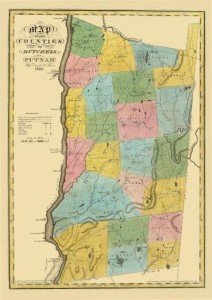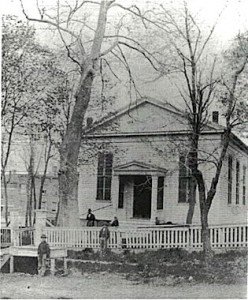 Thanks in part to New York State’s recent $134 million investment in New York Works Projects aimed at putting New Yorkers back to work and restoring and repairing state parks and historic sites, the east portico and estate wall of Staatsburgh State Historic Site, in Staatsburgh, DUtchess County, will soon receive a much-needed restoration of its grand estate wall and historic entrance portico.
Thanks in part to New York State’s recent $134 million investment in New York Works Projects aimed at putting New Yorkers back to work and restoring and repairing state parks and historic sites, the east portico and estate wall of Staatsburgh State Historic Site, in Staatsburgh, DUtchess County, will soon receive a much-needed restoration of its grand estate wall and historic entrance portico.
The projects are expected to take a year to complete. New York Works is designed to reinvent state economic development with innovative new strategy that will put New Yorkers back to work rebuilding the state’s infrastructure. The Task Force will help create tens of thousands of jobs by coordinating comprehensive capital plans, overseeing investment in infrastructure projects, and accelerating hundreds of critical projects across the state.
During the estate wall and east portico projects, house tours will continue to be offered, the site’s museum shop and exhibit gallery will remain accessible. House tours are given Thursday through Sunday, between 11am and 5pm (last tour starts at 4pm) through October, and during special holiday hours in November and December. Additionally the NYS Office of Parks, Recreation and Historic Preservation has created a “virtual tour” video that will enable all visitors to see highlights of the mansion’s interior while hearing about the architecture of the house and the people who lived and worked at the mansion in its heyday (1895-1920).

Formerly the country estate of Ogden Mills and Ruth Livingston Mills, the opulent Beaux Arts mansion was expanded and decorated to its present size of 79 rooms in 1895 by renowned architect Stanford White, of the well-known architectural firm, McKim, Mead & White. Part of White’s renovation included the building of a grand, two-storey portico entrance, which dominates the view of the house as one approaches from the road, and clearly communicates the wealth and importance of its occupants. After more than a century of continual use, this part of the house is in need of structural and aesthetic rehabilitation. Also included in the NY Works Project plans for Staatsburgh are repair of the estate wall and the mansion’s roof.
To visit Staatsburgh State Historic Site, please call 845-889-8851 or visit their website. House tours are available Thursday through Sunday, from 11:00 am to 4:00 pm in season (April through October) with additional special hours in the holiday season and winter months.
Staatsburgh State Historic Site is located on Old Post Road in Staatsburg, off Route 9 between Rhinebeck and Hyde Park. The historic site is one of six historic sites and 15 state parks administered by New York State Office of Parks, Recreation and Historic Preservation – Taconic Region.
 If there is one county where local history should loom large on the political landscape that should be Dutchess County. It was less than a century ago when it had arguably the most famous local historian in America, President Franklin Delano Roosevelt. That historical legacy contributed to the disappointment over the fact that Dutchess County did not have a county historian when I began writing at New York History.
If there is one county where local history should loom large on the political landscape that should be Dutchess County. It was less than a century ago when it had arguably the most famous local historian in America, President Franklin Delano Roosevelt. That historical legacy contributed to the disappointment over the fact that Dutchess County did not have a county historian when I began writing at New York History.






